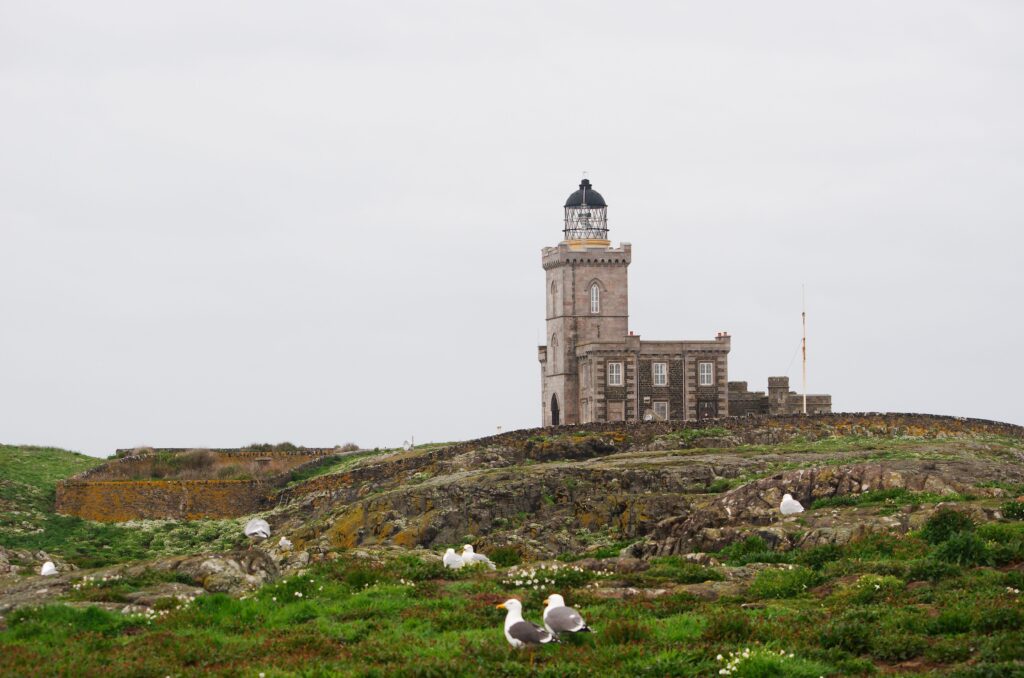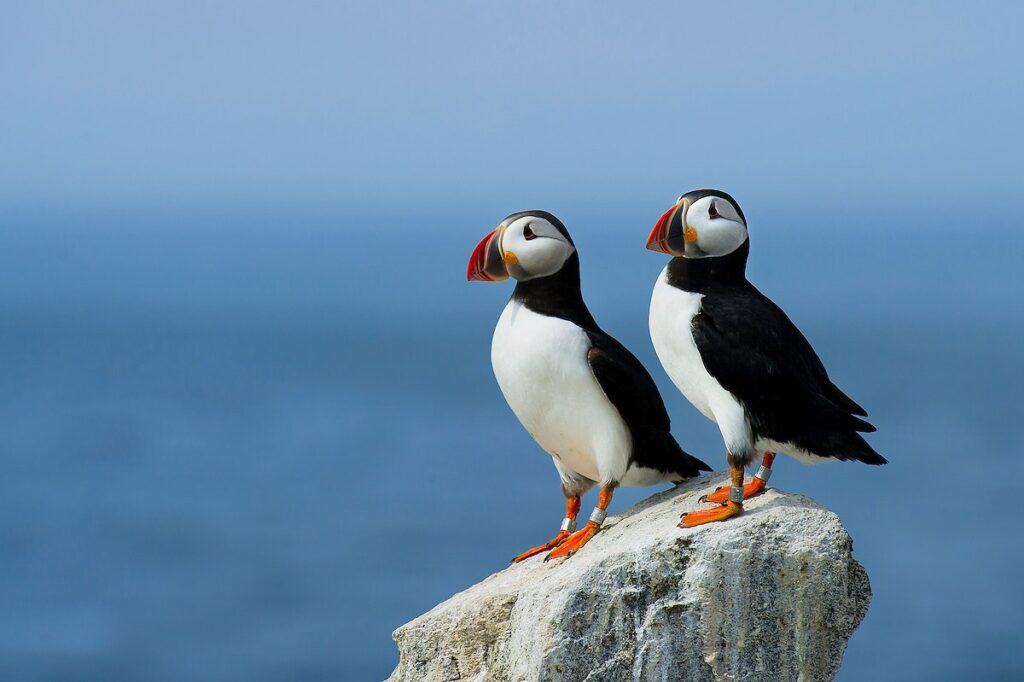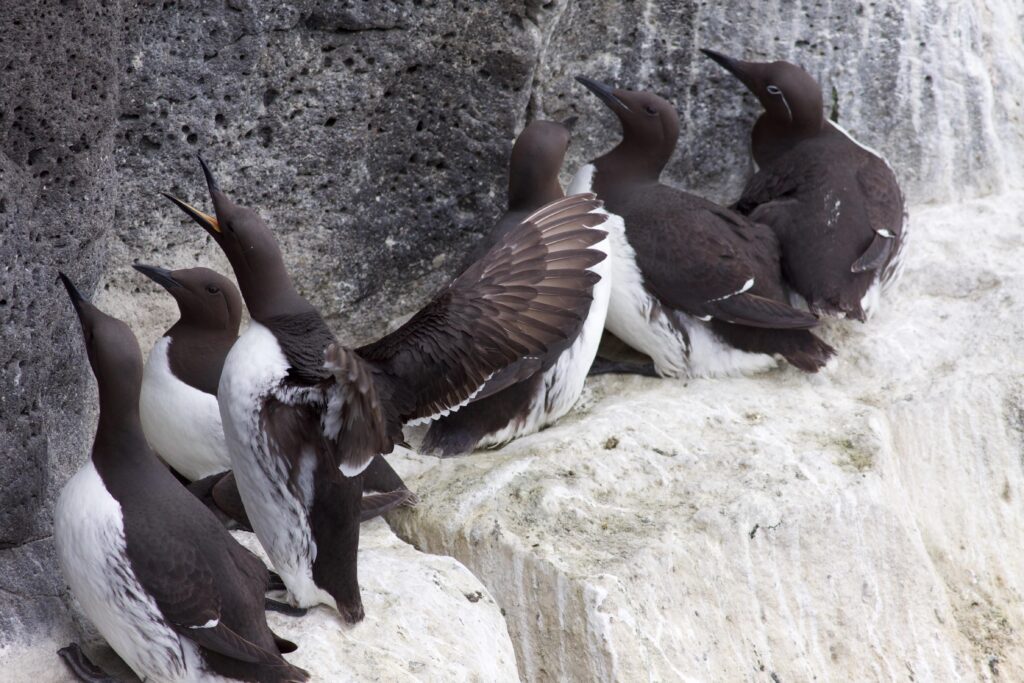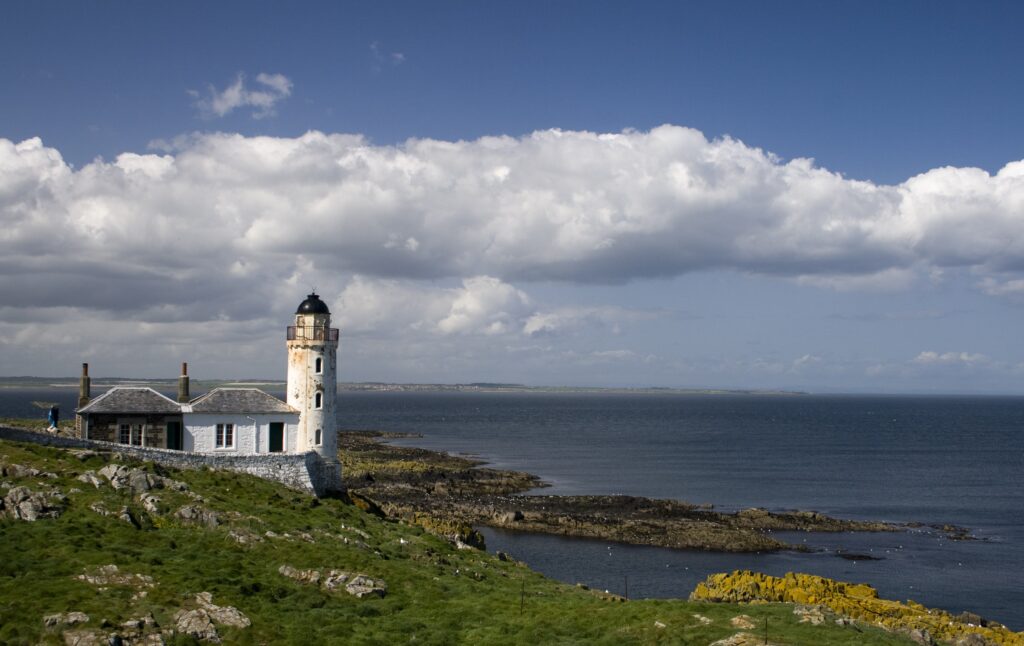Isle of May Nature Reserve, Anstruther KY10 3XB

©Magnus Hagdorn, Wikimedia Commons
As of 1956, the Isle of May is one of Scotland’s 45 National Nature Reserves and belongs to NatureScot. The island is only accessible by boats which depart from each side of the Firth of Forth (North Berwick or Anstruther) and visitors can stay only 2.5 hours on land in order to minimize disturbance to the colony. A warden, assistant warden, volunteers and several researchers monitoring many aspects of the local wildlife live for up to 9 months a year on the island.

©rawpixel.com
Notably, the island is home to the biggest Scottish puffin colony! From cliff-breeding seabirds such as guillemots, razorbills, kittiwakes, fulmars to cormorants, Arctic terns or sea ducks such as Eiders, the island boasts many observable species. The island is also famous for its lighthouses. One was built in 1816 by Robert Stevenson, architect of many Scottish lighthouses and grandfather of the writer Robert Louis Stevenson; the other was built in 1843 and has now converted into a bird observatory.

©Boaworm, Wikimedia Commons
Sources: Individual Researcher Walk; NatureScot; Isle of May National Nature Reserve’s blog
Additional Links:

